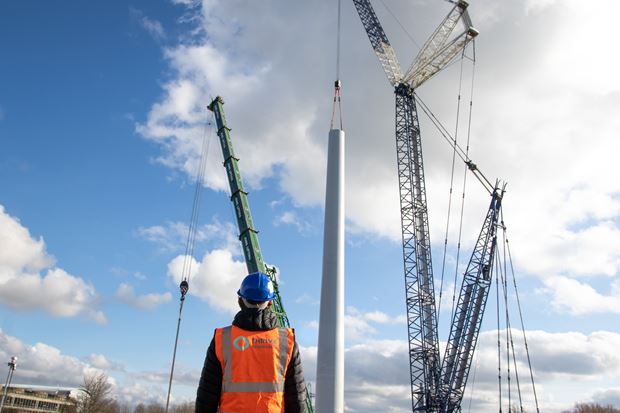News
Thrive in top 3% of UK B Corps following recertification
Twenty point increase in impact score.
Posted: 18 Apr 2024
We’re committed to reaching net zero emissions by the end of the decade.

Thrive Renewables pledges to reach net zero emissions by 2030 via our commitment to the SME Climate Hub, a non-profit global initiative that empowers small to medium sized companies to take climate action and build resilient businesses for the future. The Hub is an initiative of the We Mean Business Coalition, the Exponential Roadmap Initiative, the United Nations Race to Zero campaign and the Net Zero team at Oxford University.
As outlined in the SME Climate Hub guidance, businesses providing climate solutions as part of their core business model (like us) are permitted to half their emissions on an intensity basis rather than an absolute basis. That means we’re also committing to align with a +1.5°C trajectory by halving emissions intensity by 2030.
We’ll report on our progress on a yearly basis. You can read some of the highlights from 2022 below or download our latest Net Zero Plan and Climate Report.
Thrive funds, constructs and operates sustainable energy projects that deliver significant carbon emissions reductions. In fact, our wind, solar and hydro sites have avoided the emission of over 942,000 tonnes of carbon dioxide since our inception in 1994.
We were also one of the first companies to fund ‘direct wire’ energy solutions for businesses – installing solar or wind projects on site, enabling them to benefit from cleaner, cheaper power, as well as reducing their own carbon footprint.
Other key actions we’ve taken:
The Greenhouse Gas Protocol is a global, standardised framework to measure and manage greenhouse gas (GHG) emissions. It splits emissions into three categories:
Scope 1 – Direct emissions from sources that a company owns or controls directly e.g. the gas used for our heating.
Scope 2 – Indirect emissions coming from the energy it purchases and uses e.g. the electricity powering our office.
Scope 3 – Indirect emissions resulting from sources that are not controlled or owned by the company. For example, the resulting emissions from our supply chain or employee commuting and business travel.
 2022 was a very successful year in terms of project development and is reflected in our reported emissions, which include the full construction footprint of three new clean energy projects. However, these new projects will deliver emission reductions well into the future – for example, a wind project will operate for 25-30 years with very low emissions during this time.
2022 was a very successful year in terms of project development and is reflected in our reported emissions, which include the full construction footprint of three new clean energy projects. However, these new projects will deliver emission reductions well into the future – for example, a wind project will operate for 25-30 years with very low emissions during this time.
For a full breakdown on our scope 1, 2 and 3 emissions, please read our 2022 report here.

News
Twenty point increase in impact score.
Posted: 18 Apr 2024
News
We’re helping them empower twice as many communities to take climate action.
Posted: 17 Apr 2024
News
Launching in 2016, it was the first bond offer to be available through an Innovative Finance ISA (IFISA).
Posted: 12 Apr 2024